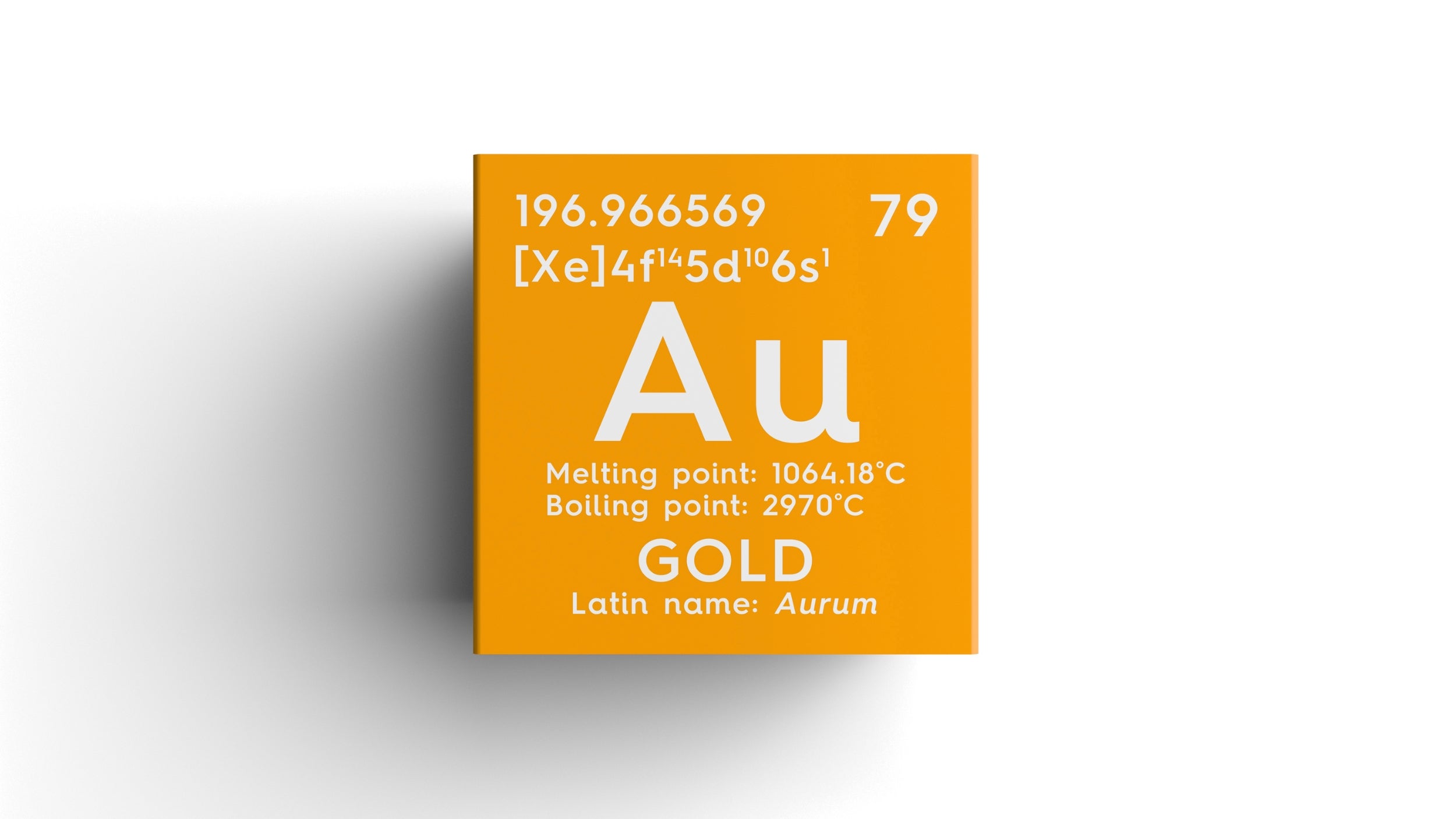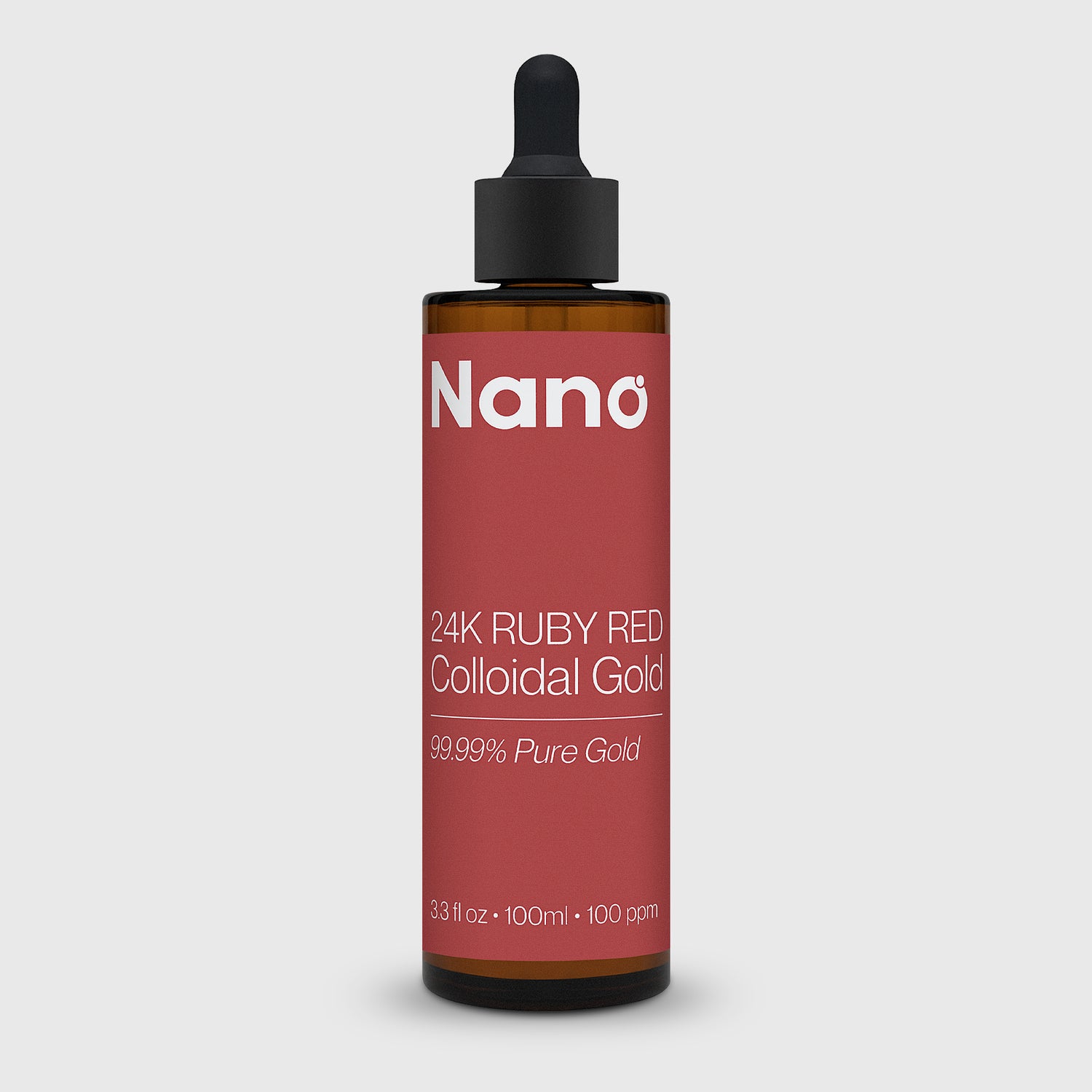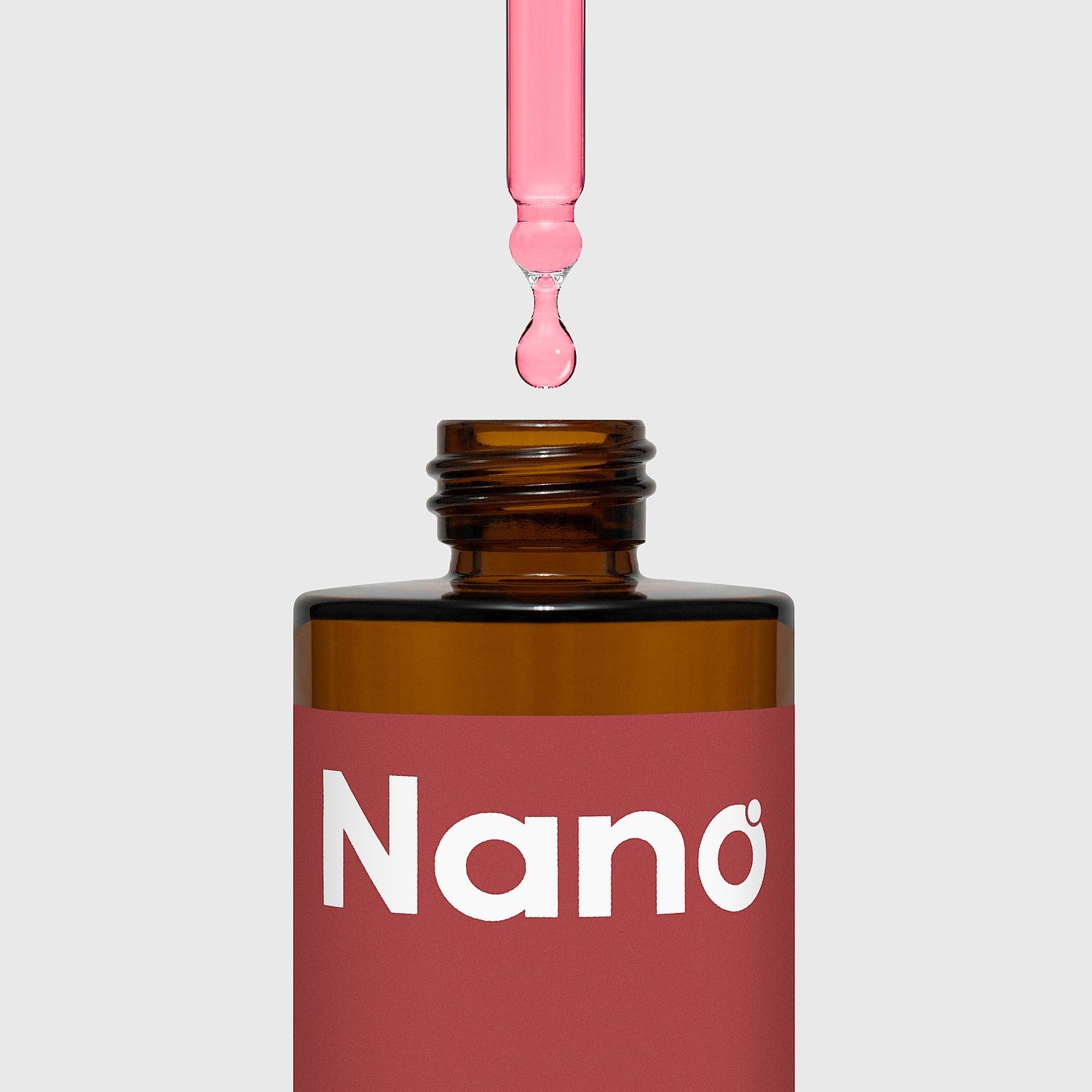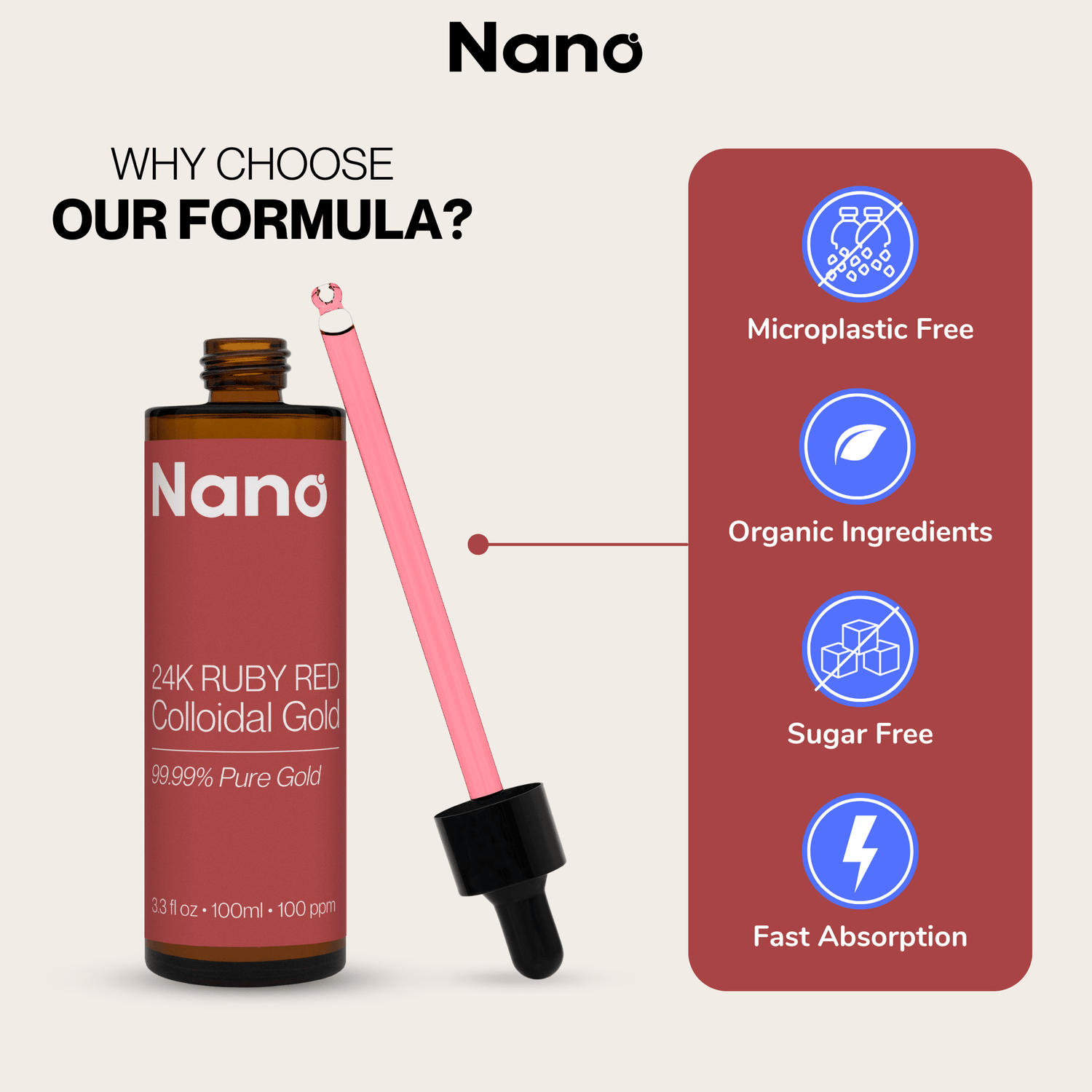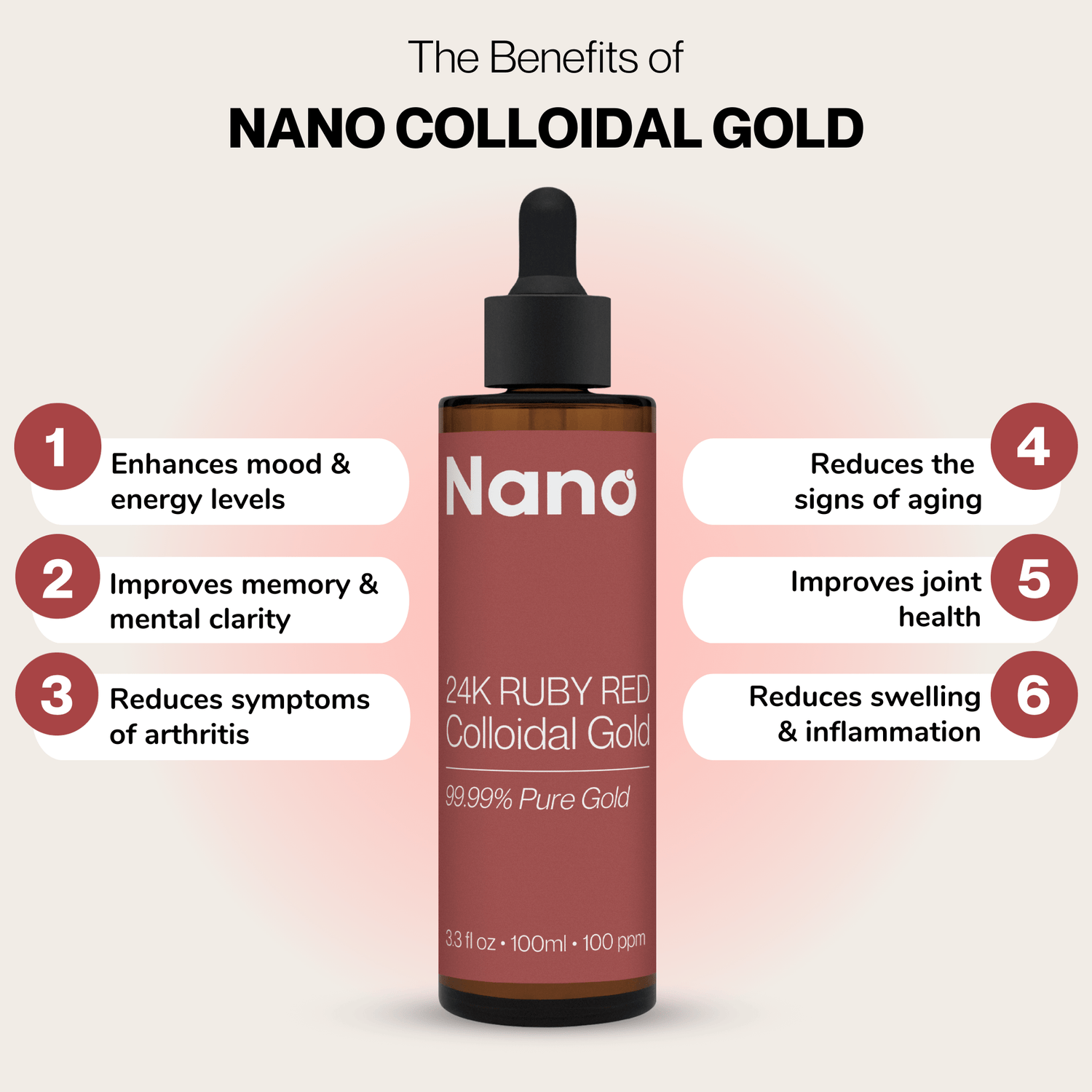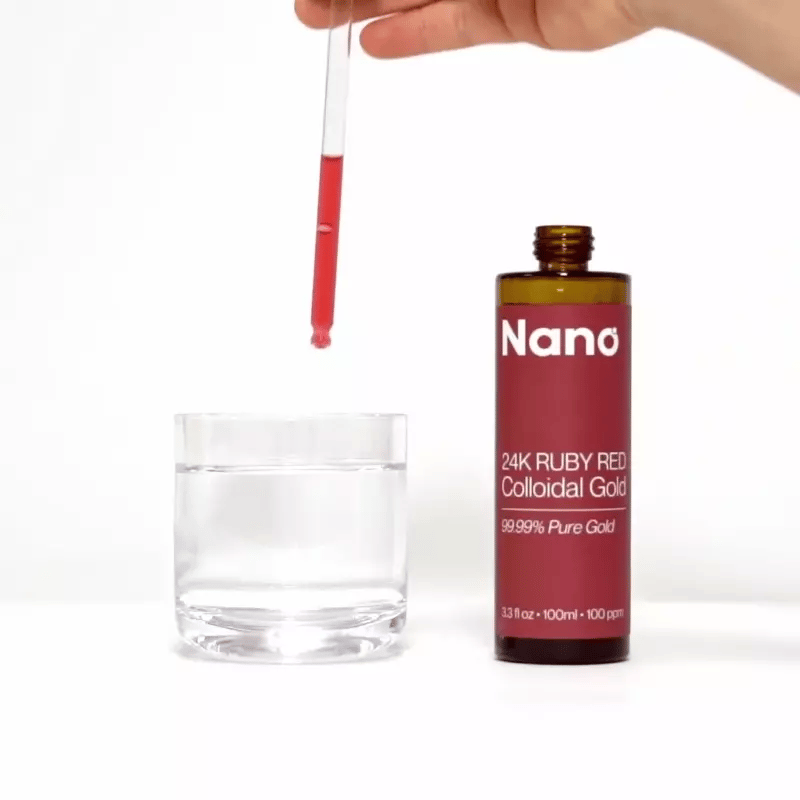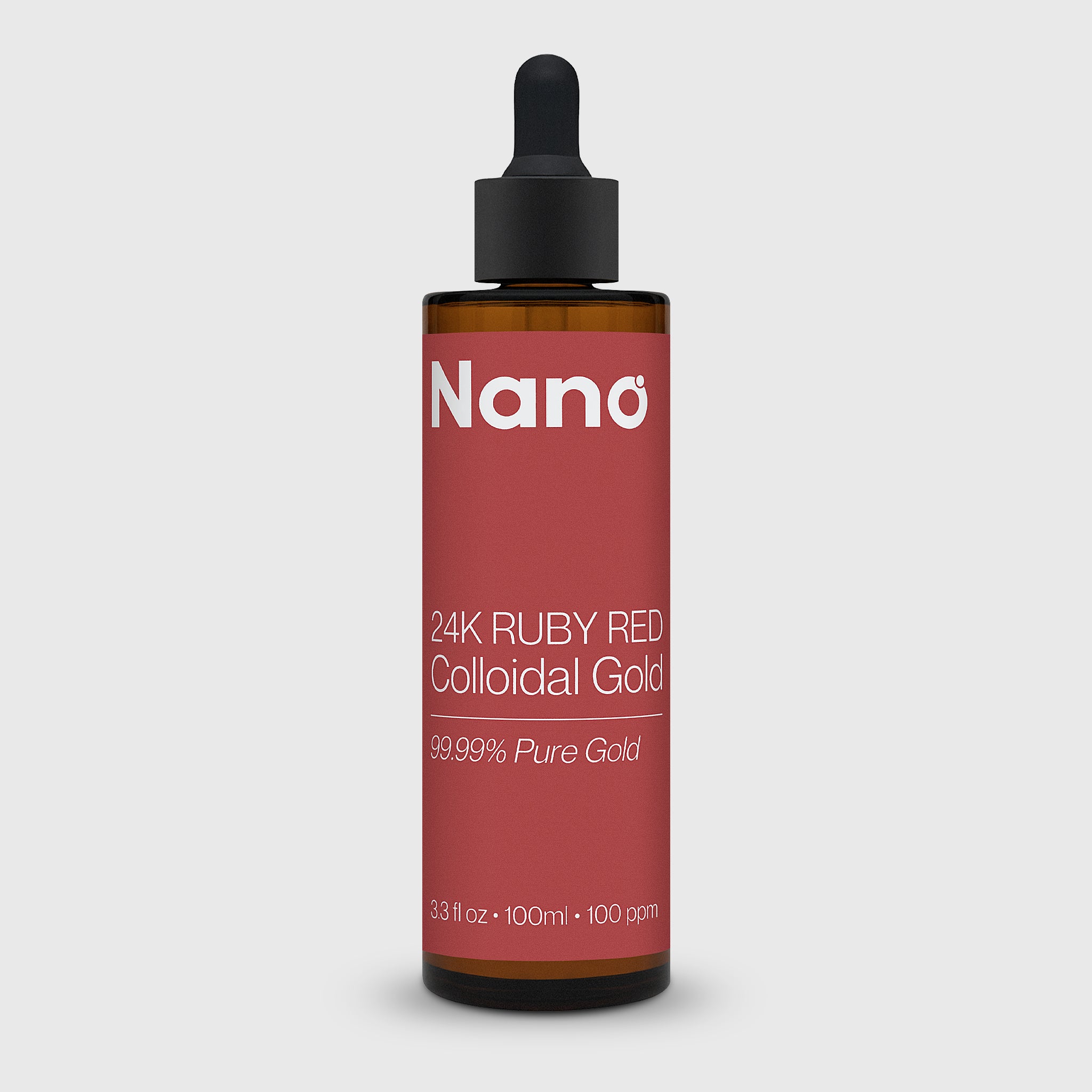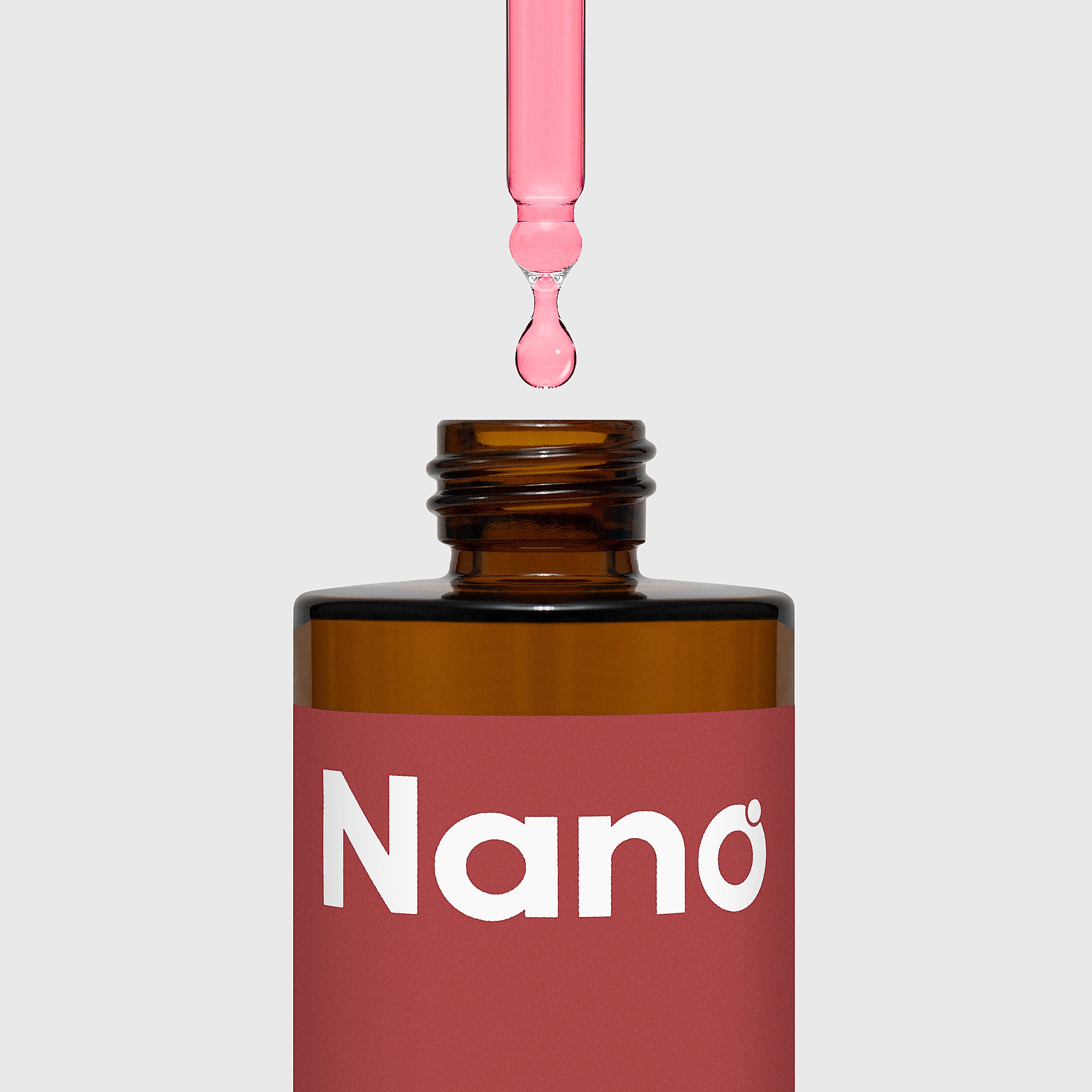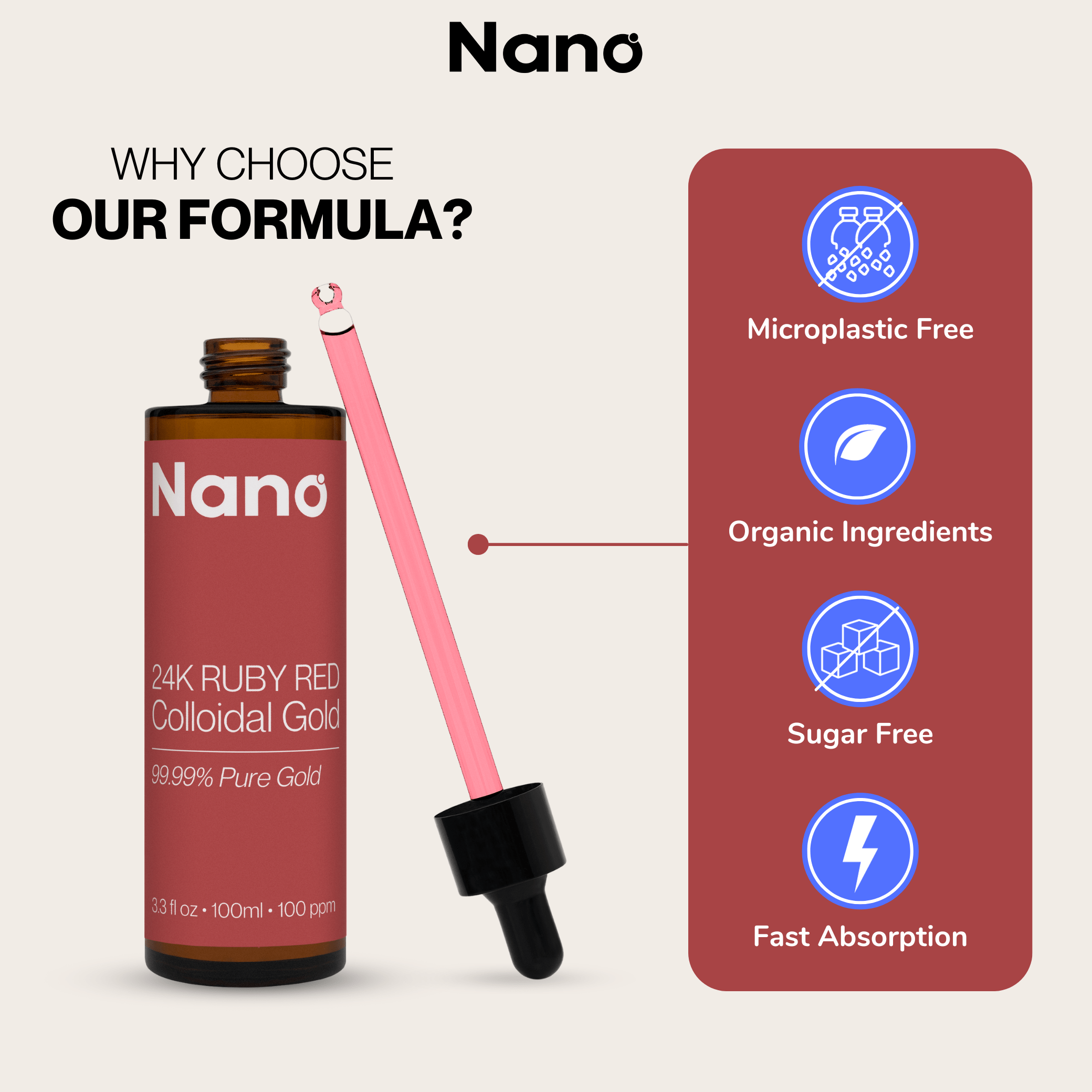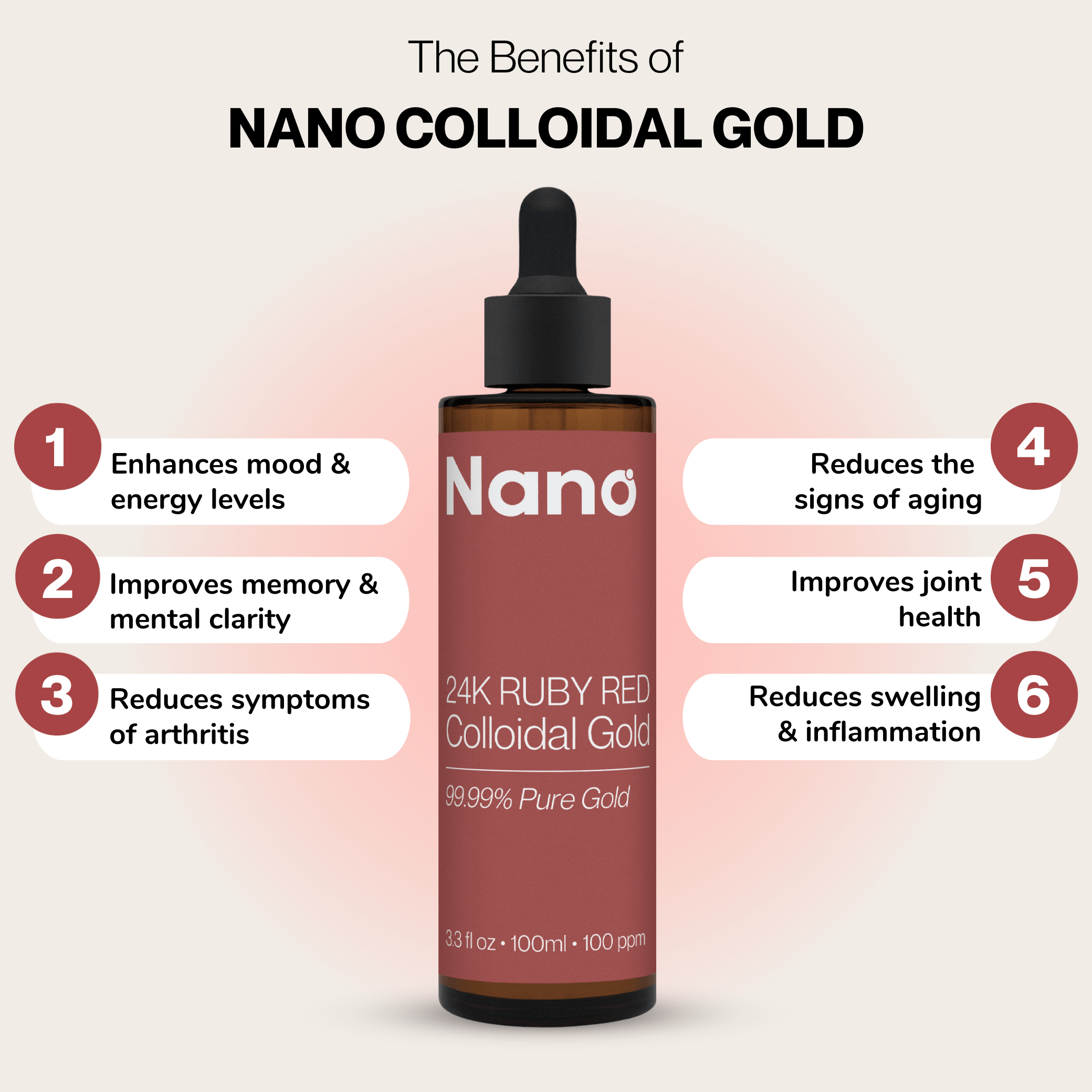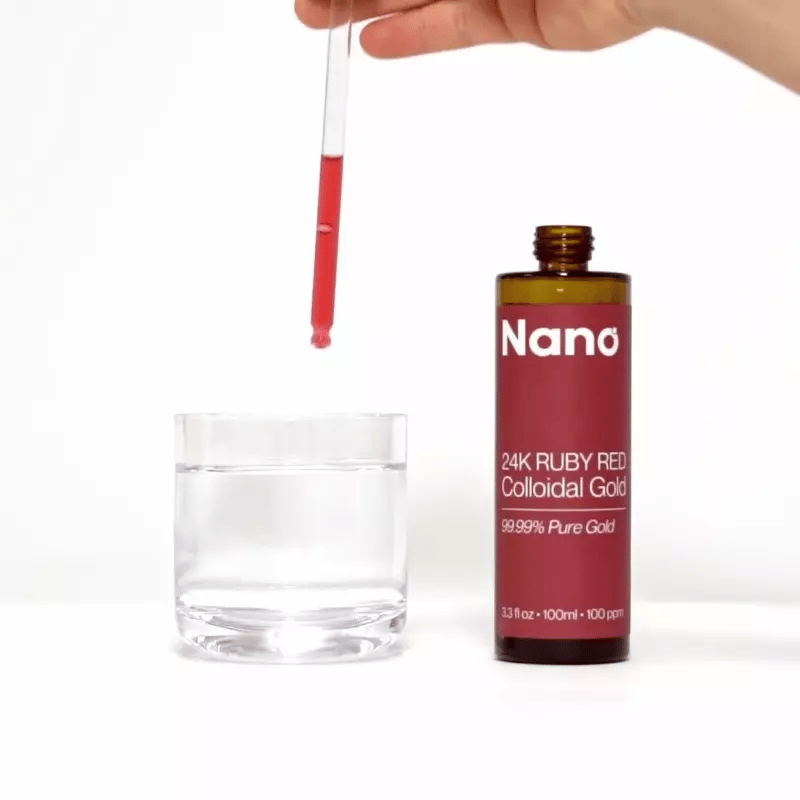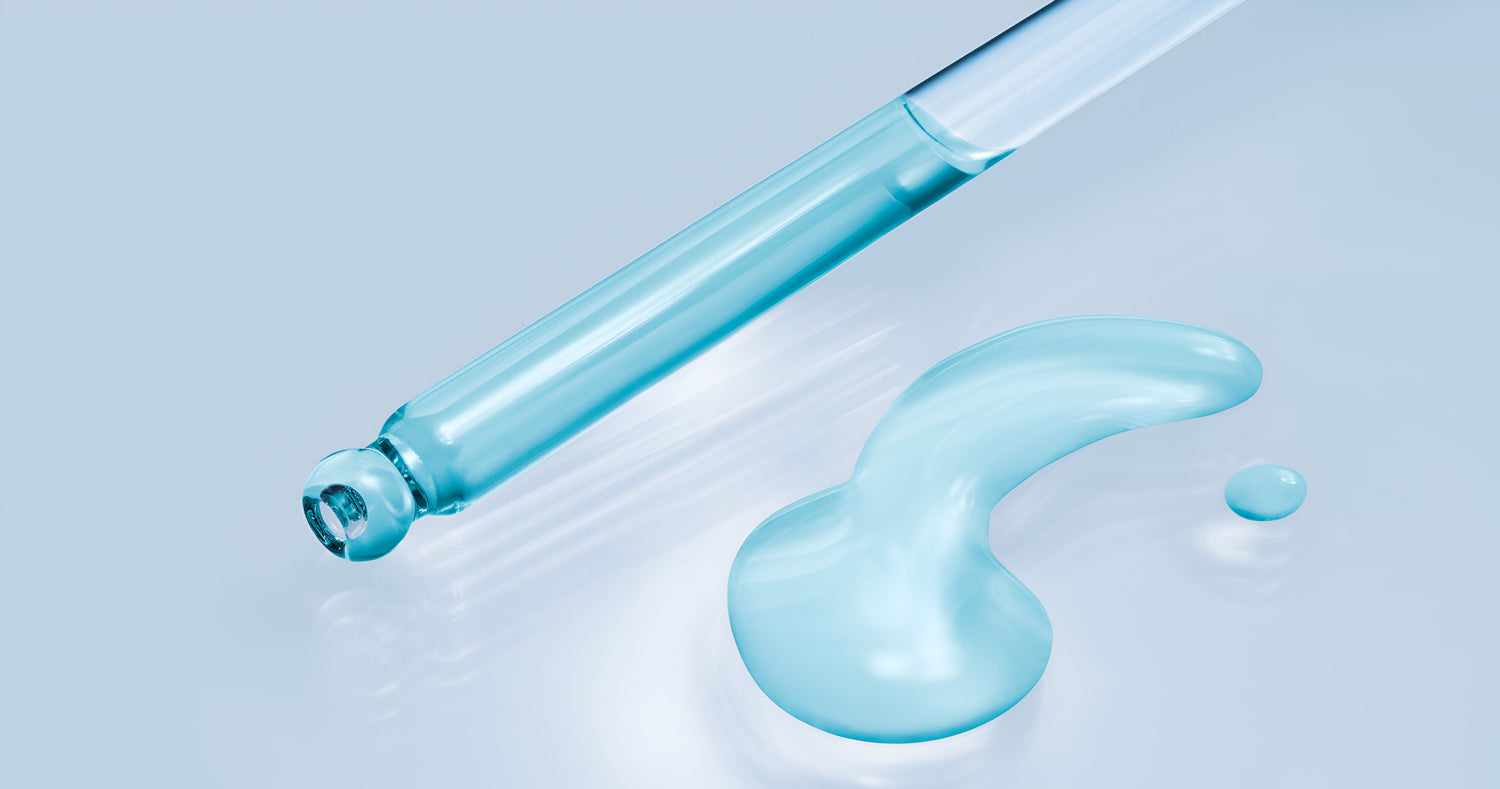Colloidal gold, also known as nanogold, is a suspension of extremely small gold nanoparticles in a liquid. These nanoparticles, measuring less than 100 nanometers in diameter, exhibit unique optical, electrical, and chemical properties that make them attractive for a wide range of biomedical applications [1, 2]. In recent years, colloidal gold has emerged as a promising material for drug delivery, diagnostics, and imaging [3].
Therapeutic Applications of Colloidal Gold
Colloidal gold has demonstrated therapeutic potential in various medical conditions, including:
-
Rheumatoid arthritis: Colloidal gold has been used for decades to treat rheumatoid arthritis, an autoimmune disease characterized by joint inflammation and pain. While the exact mechanism of action remains unclear, colloidal gold is believed to modulate the immune system and reduce inflammation [4].
-
Cancer therapy: Colloidal gold nanoparticles can be conjugated to anticancer drugs, allowing for targeted delivery of the drug directly to tumor cells. This targeted approach can minimize side effects and improve treatment efficacy [5]. A recent study found that colloidal gold nanoparticles conjugated to the anticancer drug doxorubicin exhibited significantly higher cytotoxicity against cancer cells compared to free doxorubicin, indicating the potential of colloidal gold nanoparticles as drug carriers for cancer therapy [6].
-
Antimicrobial therapy: Colloidal gold nanoparticles have shown potential as antimicrobial agents, exhibiting activity against a variety of bacteria and fungi [7]. Their small size allows them to penetrate biofilms, which are protective communities of microorganisms that are often resistant to conventional antibiotics [8]. A study published in 2019 found that colloidal gold nanoparticles coated with polydopamine exhibited potent antibacterial activity against E. coli bacteria, suggesting their potential as novel antimicrobial agents [9].
- Gene therapy: Colloidal gold nanoparticles can be used as non-viral vectors for gene therapy, delivering therapeutic genes into cells. Their biocompatibility and ability to protect DNA from degradation make them promising alternatives to viral vectors. A study found that colloidal gold nanoparticles were successfully used as vehicles for the target-specific delivery of gene-silencing moieties in several different types of cancer with promising results that led to significant suppression of tumor growth [10].
Diagnostic and Imaging Applications
Colloidal gold nanoparticles also play a crucial role in diagnostics and imaging:
-
Immunogold labeling: Colloidal gold nanoparticles can be conjugated to antibodies, allowing for the specific labeling and detection of target molecules, such as proteins or antigens. This technique is widely used in electron microscopy and immunoassays [11].
-
Biosensors: Colloidal gold nanoparticles can be incorporated into biosensors to detect various substances, including biological molecules, environmental pollutants, and explosives. Their ability to interact with light and alter its properties makes them sensitive and versatile sensing elements [12]. A study published in 2010 demonstrated the development of a colloidal gold nanoparticle-based biosensor for the detection of mercury ions, exhibiting high sensitivity and selectivity for mercury detection in environmental samples [13].
-
Bioimaging: Colloidal gold nanoparticles can be used as contrast agents in imaging techniques such as computed tomography [CT] and magnetic resonance imaging [MRI]. Their ability to scatter X-rays or generate magnetic signals allows for enhanced visualization of specific tissues or structures within the body. A study published in 2021 found that colloidal gold nanoparticles coated with silica showed significant enhancement of MR imaging of colorectal carcinoma, demonstrating their potential as tumor-specific imaging agents [14].
Conclusion
Colloidal gold holds immense promise for various medical applications, ranging from drug delivery and cancer therapy to diagnostics and imaging. Its unique properties, such as biocompatibility, tunable size and surface properties, and optical and catalytic activity, make it a versatile material with the potential to revolutionize healthcare. As research continues to elucidate its mechanisms of action and optimize its formulation, colloidal gold is poised to play an increasingly significant role in modern medicine.
References
- Ali, H., El-Haj, B., Saifullah, S., & Kawish, M. (2020). Gold nanoparticles in cancer diagnosis and therapy, 43-58
- Paciotti, G., Myer, L., Weinreich, D., & Goia, D. (2004). Colloidal Gold: A Novel Nanoparticle Vector for Tumor Directed Drug Delivery. Drug Delivery, 11(3):169-83.
- Cai, W., Gao, T., Hong, H., & Sun, J. (2008). Applications of gold nanoparticles in cancer nanotechnology. Nanotechnology, Science and Applications. 1: 17–32.
- Han, X., Avelar, E. Mathai, A., Vollmer, D., & Lehman, R. (2022). A Clinical Study to Evaluate the Safety and Efficacy of Oral Administration of Microscopic Dose Gold Nanoparticle (AuNP) on Knee Joint Health and Function in Arthritis Patients. Journal of Functional Morphology and Kinesiology. 7(3), 52
- Dreaden, E., Austin, L., Mackey, M., & El-Sayed, M. (2013) Size matters: gold nanoparticles in targeted cancer drug delivery. Therapeutic Delivery. 3(4): 457–478.
- Faid, A., Shouman, S., Badr, Y., & Sharaky, M. (2022) Enhanced cytotoxic effect of doxorubicin conjugated gold nanoparticles on breast cancer model. BMC Chemistry. 16(1): 90.
- Li, X., Robinson, S., Gupta, A., Saha, K. et al (2014) Functional Gold Nanoparticles as Potent Antimicrobial Agents against Multi-Drug-Resistant Bacteria. VOL. 8, NO. 10, 10682–10686
- Yu, Q., Li, J., Zhang, Y., Wang, Y., Liu, L., & Li, M. (2016) Inhibition of gold nanoparticles (AuNPs) on pathogenic biofilm formation and invasion to host cells. Scientific Reports. 26667
- Zhang, Q., Wang, Y., Zhang, W., Hickey, M., Lin, Z., Tu, Q., & Wang, J. (2019) In situ assembly of well-dispersed Ag nanoparticles on the surface of polylactic acid-Au@polydopamine nanofibers for antimicrobial applications. Colloids and Surfaces B: Biointerfaces. Volume 184, 110506
- Mendes, R., Alexandra, F., & Baptista, P. ( 2017) Gold Nanoparticle Approach to the Selective Delivery of Gene Silencing in Cancer—The Case for Combined Delivery. 8(3): 94.
- Lou, S., Ye, J., Li, K., & Wu, A. (2011) A gold nanoparticle-based immunochromatographic assay: The influence of nanoparticulate size. Analyst. 137, 1174
- Ferrari, E., (2023) Gold Nanoparticle-Based Plasmonic Biosensors. Biosensors.13(3), 411
- Liu, D., Qu, W., Chen, W., Zhang, W., Wang, Z., & Jiang, X. (2010) Highly Sensitive, Colorimetric Detection of Mercury(II) in Aqueous Media by Quaternary Ammonium Group-Capped Gold Nanoparticles at Room Temperature. 82, 23, 9606–9610
- Luo, D., Wang, X., Burda, C., & Basilion, J. (2021) Recent Development of Gold Nanoparticles as Contrast Agents for Cancer Diagnosis. Cancers (Basel).13(8): 1825.


